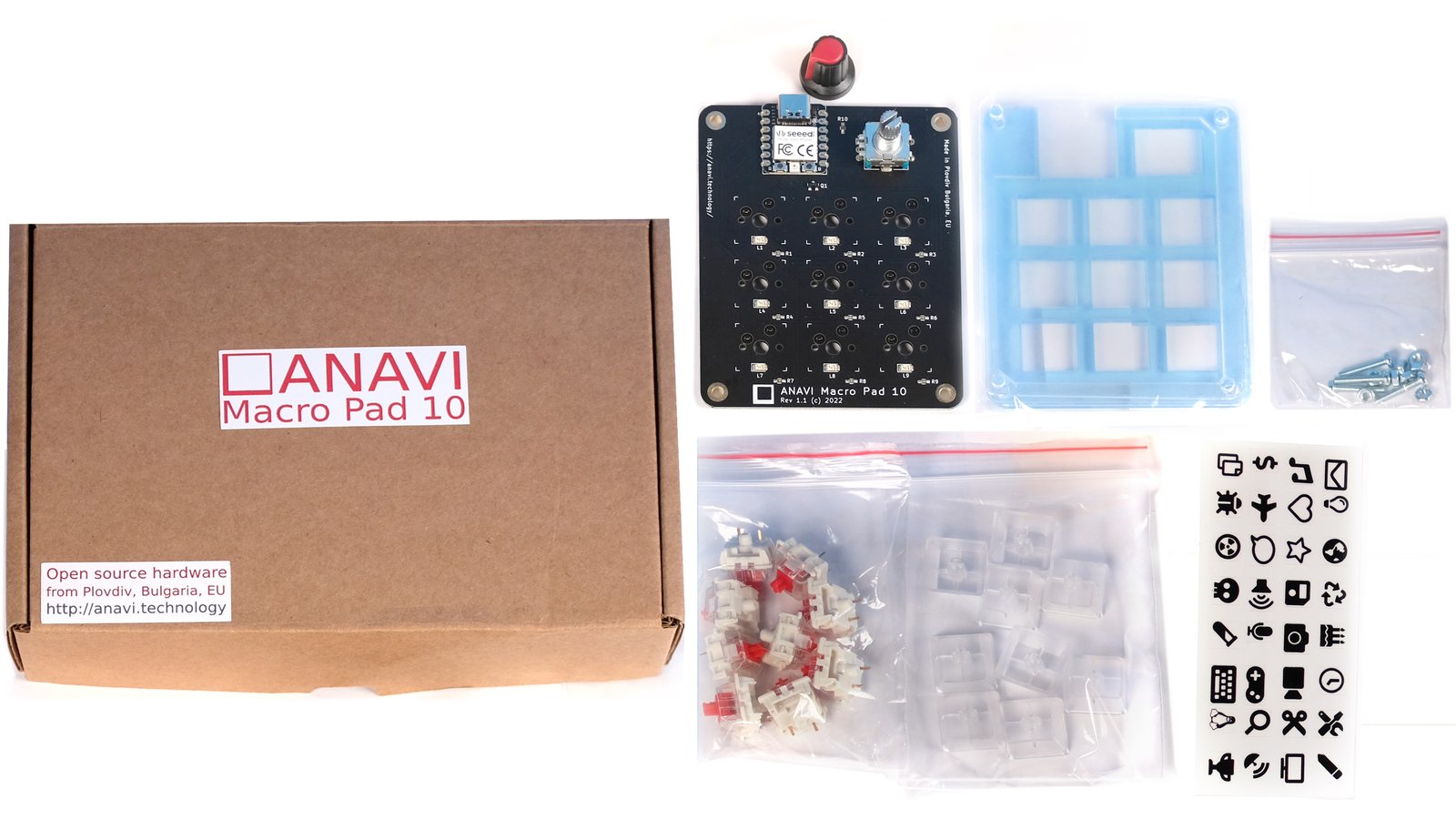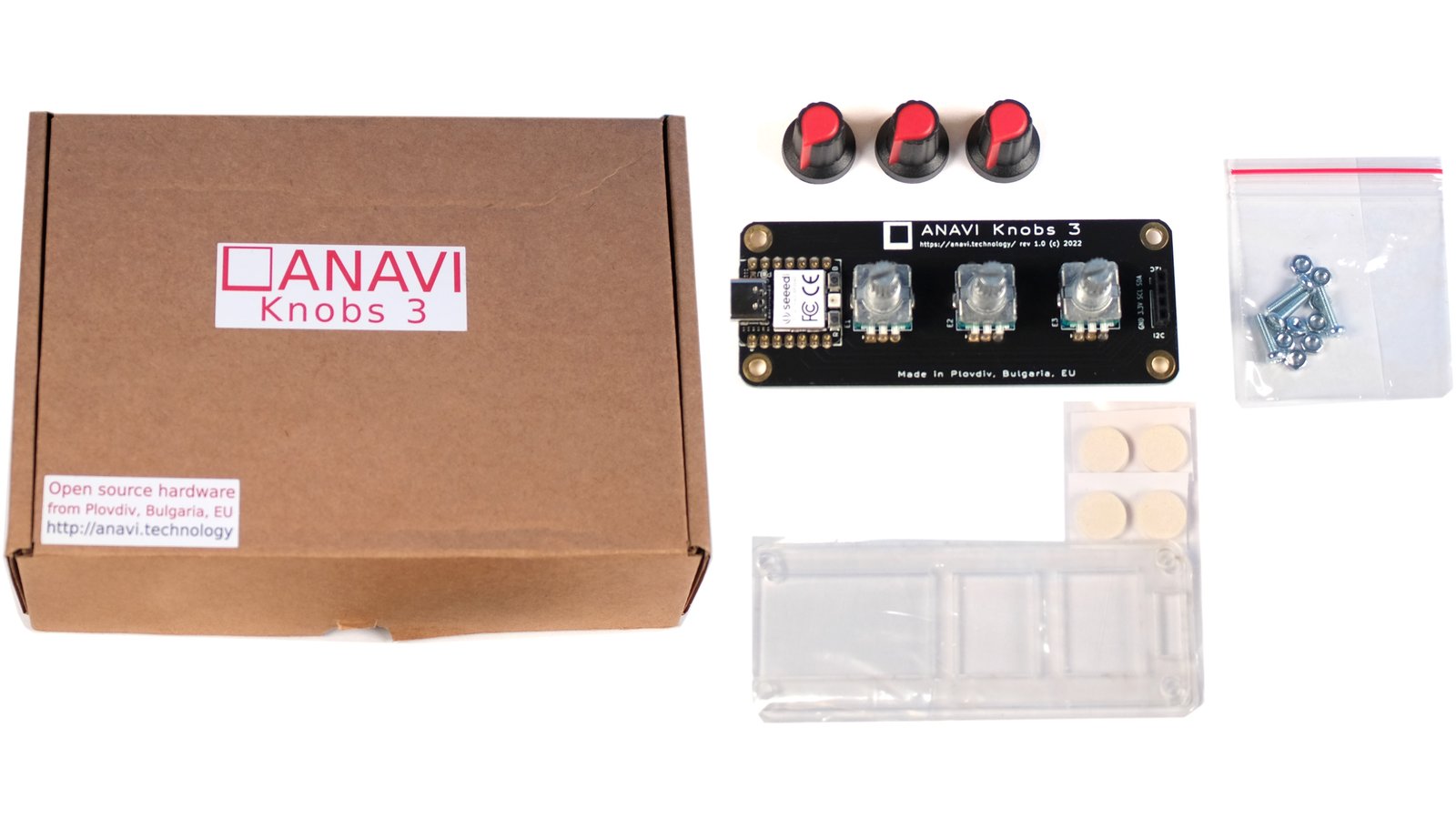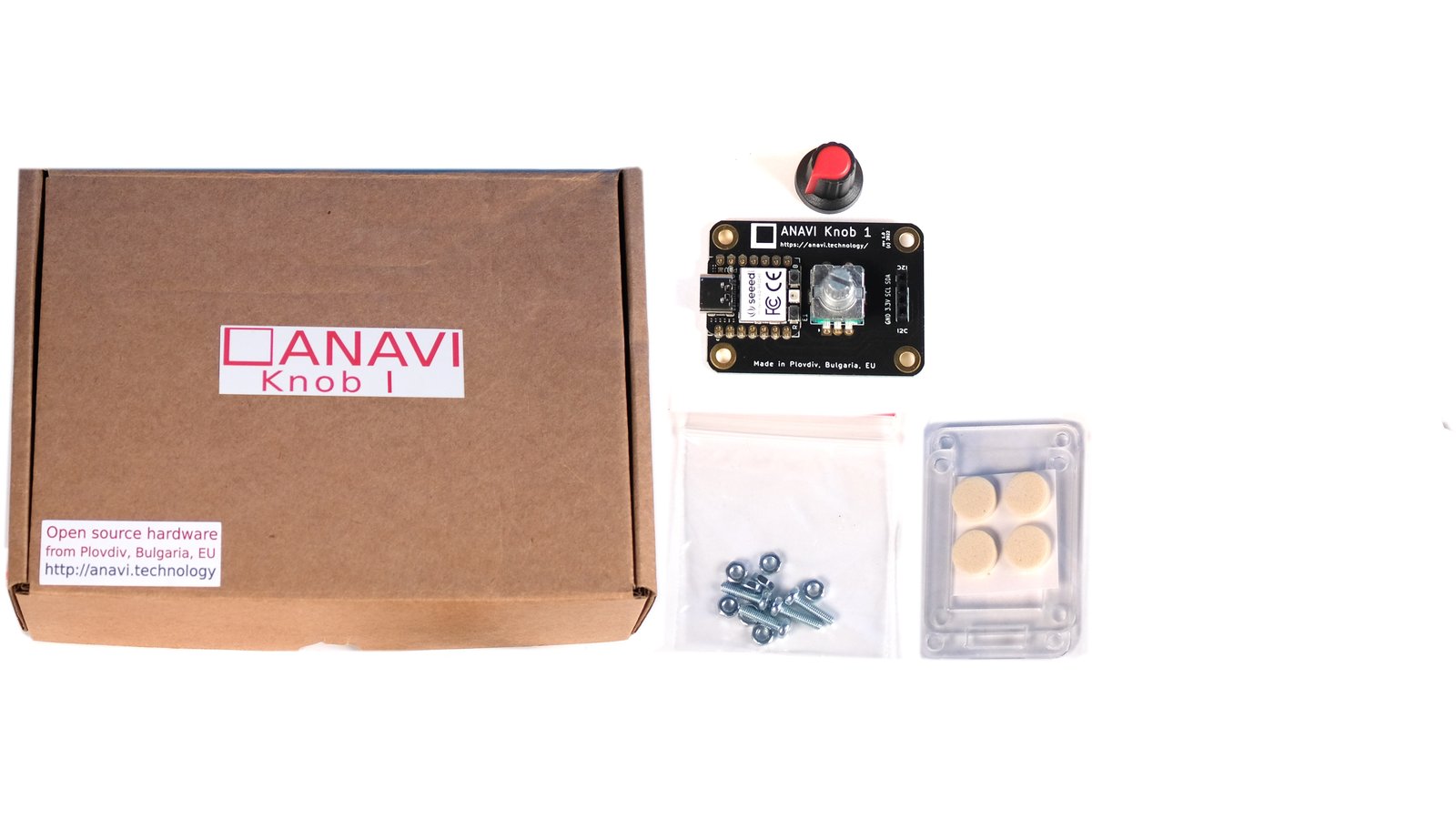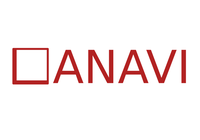ANAVI Technology
Home Automation
KiCad
ANAVI Technology
Home Automation
KiCad
We present you with three small, programmable, open source mechanical input devices: ANAVI Macro Pad 10, ANAVI Knobs 3, and ANAVI Knob 1. All three are powered by the mighty Raspberry Pi RP2040 microcontroller at the heart of the Seeed XIAO RP2040, which provides support for USB Type-C and runs KMK, an advanced but easy-to-use firmware written in CircuitPython.
Each of these small input devices can be customized to fit various use cases: video or audio editing, entertainment broadcasting, gaming, programming, etc. Boost your productivity with the precise control and helpful lighting effects they provide. Getting started is easy! Just connect the device to your Windows, MacOS, or GNU/Linux computer with a USB Type-C cable and you’re ready to go.
ANAVI Macro Pad 10 offers a rotary encoder with clickable switch and nine hot-swappable Gateron red mechanical switches with translucent keycaps. The black, gold-plated PCB features yellow backlighting under each key, RGB LED on the front and four WS2812B LEDs for under-lighting. The hot-swappable sockets allow you to change the mechanical switches easily, with no soldering required.
ANAVI Knobs 3 offers three rotary encoders with clickable switches and a RGB LED. The black, gold-plated PCB also features an I²C slot for adding peripherals such as a mini OLED display.
ANAVI Knob 1 is a tiny input device with a single rotary encoder with a clickable switch and a RGB LED. You can turn it left, you can turn it right, and you can click it. It is fully programmable and there is an I²C slot you can use to add peripherals.
Getting started with ANAVI Macro Pad 10, ANAVI Knobs 3 and ANAVI Knob 1 is easy because they rely on popular open source projects. Just connect the keyboard to your Linux, Windows, or macOS computer, and configure your keyswitch macro or shortcut settings through the open source KMK firmware available under GPLv3 and written in CircuitPython. We are officially supported by KMK, and you can find our Anavi firmware in KMK’s GitHub repository.
CircuitPython is a software implementation written in C of a programming language largely compatible with Python 3 and optimized to run on constrained embedded devices such as microcontrollers. It has been derived from MicroPython. KMK is a keyboard focused layer that sits on top of CircuitPython, which makes programming custom keyboards easy.
ANAVI Macro Pad 10, ANAVI Knobs 3, and ANAVI Knob 1 are open hardware products designed with free and open source software. Their default open source firmware is KMK ("Clackety Keyboards Powered by Python"). Source code and schematics are available on GitHub. A comprehensive user’s manual will be provided.
| ANAVI Macro Pad 10 | ANAVI Knobs 3 | ANAVI Knob 1 | ANAVI Macro Pad 8 | ANAVI Macro Pad 2 | |
|---|---|---|---|---|---|
| Rotary Encoder | Yes | Yes (3) | Yes | No | No |
| Connector Type | USB-C | USB-C | USB-C | Micro-USB | Micro-USB |
| MCU | Raspberry Pi RP2040 | Raspberry Pi RP2040 | Raspberry Pi RP2040 | Microchip ATmega32U4 | Microchip ATtiny85 |
| RGB LED | Yes (5) | Yes (1) | Yes (1) | Yes (4) | No |
| Backlighting | Yes | No | No | Yes | Yes |
| 8 Gateron red mechanical switches and translucent keycaps | Yes (9) | No | No | Yes (8) | Yes (2) |
| Hot-swappable | Yes | No | No | No | No |
| Mini OLED display | No | Optional | Optional | Optional | No |
| Open Source Hardware | Yes | Yes | Yes | Yes | Yes |
The popularity of the mechanical keyboards is rapidly increasing and there are literally hundreds of high-quality models on the market. Using our previous experience from ANAVI Macro Pad 8, ANAVI Macro Pad 2, and new modern technologies, we are proud to be delivering ANAVI Macro Pad 10 and knobs. All of these mini mechanical keyboards are with 4 key features: an encoder with a clickable switch, USB-C, Raspberry Pi RP2040 microcontroller, and the open source firmware KMK. Furthermore, unlike many of the other options on the market, ANAVI Macro Pad 10 and knobs are entirely open source, affordable, compact, and highly customizable for a wide range of applications.
All units will be made in Plovdiv, Bulgaria and packaged in eco-friendly recyclable cardboard boxes. To ensure consistently high quality, the printed circuit boards (PCB) of ANAVI Macro Pad 10, ANAVI Knobs 3 and ANAVI Knob 1 have a black solder mask and a gold surface finish. All kits are using the same key components: Seeed Studio XIAO RP2040 and rotary encoders with clickable switches. The castellated holes on XIAO RP2040 allow easier assembly with surface-mount technology (SMT). All keyboards will be carefully flashed and tested with the open source KMK firmware.
"These devices are very easy to use, just connect then to Windows, MacOS or GNU/Linux with a USB Type-C cable and get start[ed]."
"Leon Anavi has some experience under his belt with the earlier Macro Pad 2 and Macro Pad 8 open-source keypads with mechanical keys running QMK open-source firmware on a Microchip 8-bit microcontroller."
"Aktuell werden im Rahmen einer Crowdfunding-Kampagne ein Macro-Pad und zwei verschiedene Drehregler-Systeme finanziert. Diese sollen sich dank des offenen Anspruchs besonders einfach und vielseitig für eigene Zwecke adaptieren lassen"
Produced by ANAVI Technology in Plovdiv, Bulgaria.
Sold and shipped by Crowd Supply.

Mini hot-swappable mechanical keyboard with a clickable rotary encoder, 9 Gateron switches, translucent key caps, USB-C, RP2040 microcontroller, backlighting and under lighting. Includes acrylic enclosure, screws and nuts.

Mini mechanical keyboard with 3 clickable rotary encoders, USB-C, RP2040 microcontroller and I2C slot. Includes acrylic enclosure, screws and nuts.

Mini mechanical keyboard with a clickable rotary encoder, USB-C, RP2040 microcontroller and I2C slot. Includes acrylic enclosure, screws and nuts.

· AnaviTechnology · AnaviTechnology · anavi.technology
Open source hardware created and powered by free and open source software